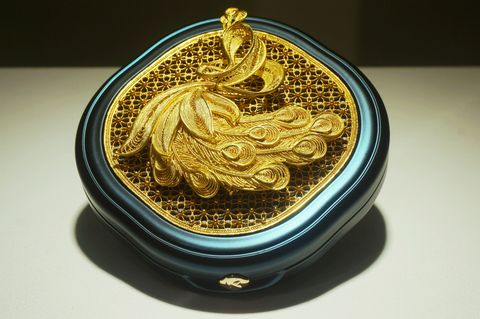We know well how good self-respect is for us. luxury lipstick, with its creamy paste, high pigmentation of the right color and, above all, elegant packaging crafted in detail. With regard to this last aspect, in China they have moved to the next level, to the jewelry level. In fact, in a cosmetic shop near the West Lake in Hangzhou, a city located in Zhejiang Province, there is a very valuable gold lipstick case complete with lock costs about 30,000 euros (220 thousand yuan). Obviously rechargeable. Rich in detail, it is a work of great craftsmanship, made using an ancient technique, in which the protagonist sees golden silk, or rather, ornamental fabric, which, as the name suggests, combines silk and gold threads, the most precious materials. It is part of the Intangible Cultural Heritage of China and is expertly crafted by craftsman and artist Yuan Changjun.
The most expensive lipstick in the world
Filigree and inlay are techniques that originated about three thousand years ago and were perfected during the Ming Dynasty, between 1368 and 1644, when they were used to make royal accessories and fine jewelry. For more than 30 years, Yuan has been working on the creation of these unique objects, striving to pass on this tradition. The store where we find the most expensive lipstick in the world actually sells other creations, such as a shell-shaped bag and a turquoise powder box adorned with a golden peacock.
Watching this last object, the most attentive makeup lovers will realize that I’ve seen this package before.. No, you read that right: Changjun also works with Florazis, an independent Chinese cosmetics brand that has become popular worldwide for the incredible beauty of its packaging and designs inspired by traditional Chinese aesthetics. We see, in fact, the same motifs printed on palettes and lipsticks as on boxes and containers. Florasis’ unique company in the international beauty arena also owes its success to Changjun’s vast knowledge and ability, who made her jewelry available to everyone familiarity with Chinese culture.
Source: Elle




